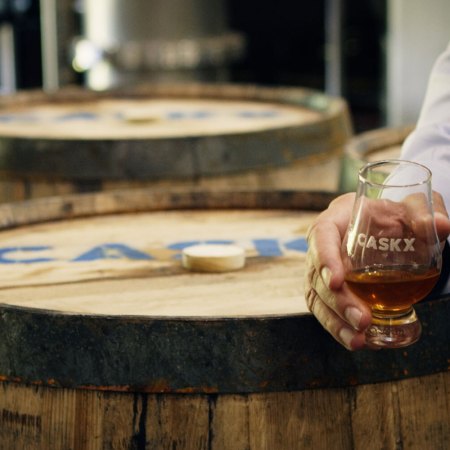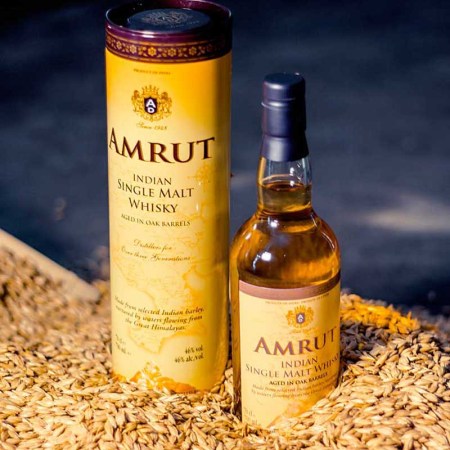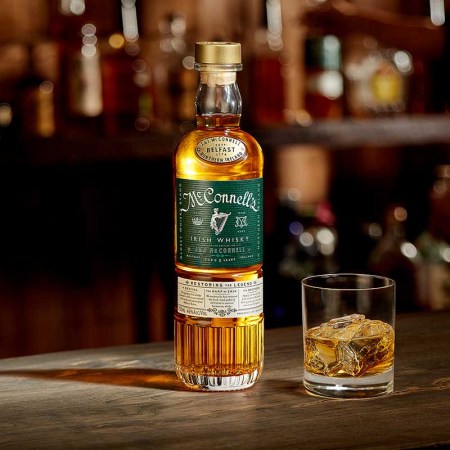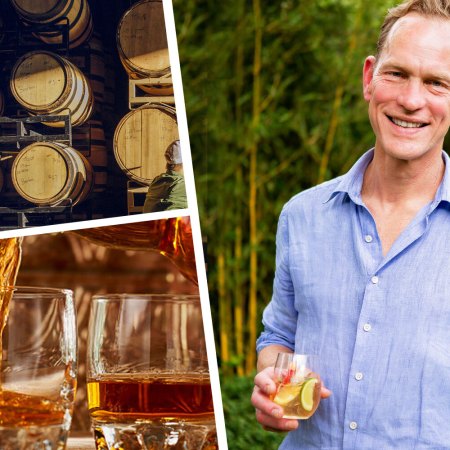Yes, you should drink whisky however you want. Any good drinks professional will tell you that. But if you want to elevate your experience with Scotch — i.e., to experience all the flavors and aromas present — slow down and follow a few simple steps.
Don’t worry, it’s nothing pretentious (no flowery adjectives, no discussion about “mouthfeel”). Just a few guiding principles from Lorne Cousin, National Ambassador for The Balvenie, on the proper way to host a whisky tasting, whether for a small group or all by your lonesome. (Note: If you ever run into Lorne, ask him about working with Anthony Bourdain.)
Last week, Cousin helped us lead a tasting at The Rickey, a beautiful cocktail bar in midtown Manhattan, at an event we called “A Dram Good Time.” The Balvenie had partnered with InsideHook to walk some loyal IH readers through five different expressions of their single malts, as well as share some knowledge of Scotch in general.
Quick background: The Balvenie is one of three remaining family-owned whisky distilleries in Scotland. They still craft their Scotch the same way they did back when they launched in 1892, and their reps will tell you that what separates them from other single malts is their commitment to the “five rare crafts” — long story short, they execute nearly the whole whisky process on-site, from growing their own barley to crafting their own barrels.
The Balvenie ambassador Lorne Cousin walks us through a Scotch tasting at The Rickey in Midtown Manhattan
And over the course of a long Tuesday night, they guided us through The Balvenie 12 Year Doublewood, Caribbean Cask, 17 Year Doublewood, 21 Year PortWood and a 30 Year, along with a few Scotch-forward cocktails (a recipe for our favorite follows our tasting notes below). Cousin presided from a makeshift dais, helping us enjoy every sip to its fullest.
Below, you’ll find some important facts on knowing one expression from another, as well as five pointers for getting the most out of your dram (note: if you’re more of a visual learner, you can also find most of Cousin’s advice in the video above).
It’s a myth that most Scotch is peaty or smoky. “Only about 10 percent is that way,” says Cousin. “There are five traditional whisky regions in Scotland, and each has a different characteristic. It’s really only the two on the West Coast, Campbeltown and Islay, that are smoky Where we’re from (Speyside), the whisky is light and sweet, with honey and vanilla flavors.” [Editor’s note: Outside of their core range, The Balvenie does make some limited-edition, peatier Scotches.]
The wood of the barrel is really important. “The character, the DNA that runs through our whisky is honey and vanilla notes, probably because we use a lot of American oak. We finish everything in a second cask — sherry, rum, port — so each expression is different and more complex. For example, a European oak sherry cask will give the whisky notes of tobacco and dark chocolate.”
The barrels are also going to affect the color of your drink. “After being American oak, the whisky will be very light, almost like a Chardonnay,” Cousin says. “It’ll be darker with a more golden color once it’s aged in, for example, a Sherry cask. And the older it is, you’ll notice it gets a bit more viscous and it’ll have more legs, like a wine.”
Use a Glencairn glass when sipping. “A rocks glass is great for drinking. The Glencairn is great for tasting.The tulip effect is great for forcing aromas up to your nose.”
Now that you’re ready to sip, heed these five rules:
- Serve the Scotch at room temperature.
- Do not swirl the glass around. It’ll erupt all the alcohol vapors to the top.
- Take a gentle sniff from the front of the glass. Then nose the top of the glass. Keep your mouth open while you’re doing this and you’ll experience more aromas.
- Give a toast to good health (“Slàinte mhath,” pronounced SLAN-tchih-vah), then try a little sip. You don’t have to “eat” it like a wine or brandy.
- Take another sip. Your palate is now used to the flavors, and you’re going to find some more complexity.
More of a cocktail guy? Find our favorite recipe from The Balvenie below:
The Caribbean Cash Daiquiri, which was on the menu at a “A Dram Good Time”
Caribbean Cash “Daiquiri”
1 oz fresh lime juice
.75 oz simple syrup
2 oz The Balvenie 14 Year Caribbean Cask
Combine in tin, shake and strain into a coupe glass. No garnish.
Why the Caribbean Cask? After 14 years aged in traditional oak casks, the Caribbean Cask is finished in — you guessed it — Caribbean rum barrels, imparting it with a tropical, funky character that works beautifully as a rum substitution.
Photos: Travis W Keyes Photography
This article was featured in the InsideHook newsletter. Sign up now.





















